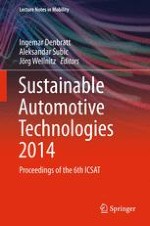2015 | OriginalPaper | Buchkapitel
Aspects of Damage Tolerance and Fatigue of CFRP Structural Components
verfasst von : U. Burger, L. Rochat
Erschienen in: Sustainable Automotive Technologies 2014
Aktivieren Sie unsere intelligente Suche, um passende Fachinhalte oder Patente zu finden.
Wählen Sie Textabschnitte aus um mit Künstlicher Intelligenz passenden Patente zu finden. powered by
Markieren Sie Textabschnitte, um KI-gestützt weitere passende Inhalte zu finden. powered by
